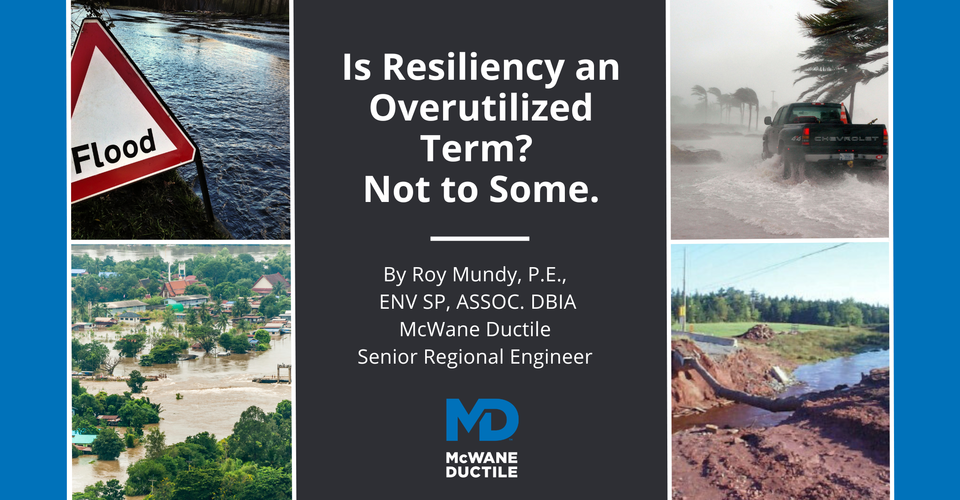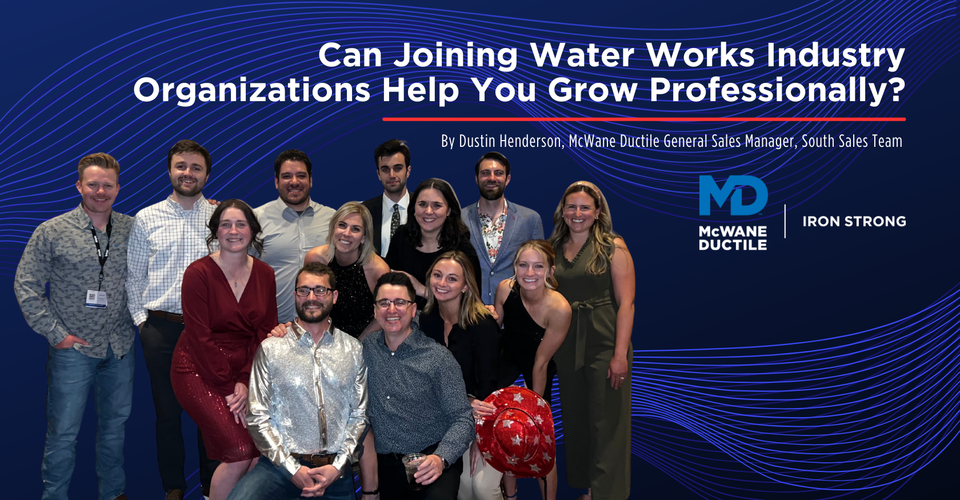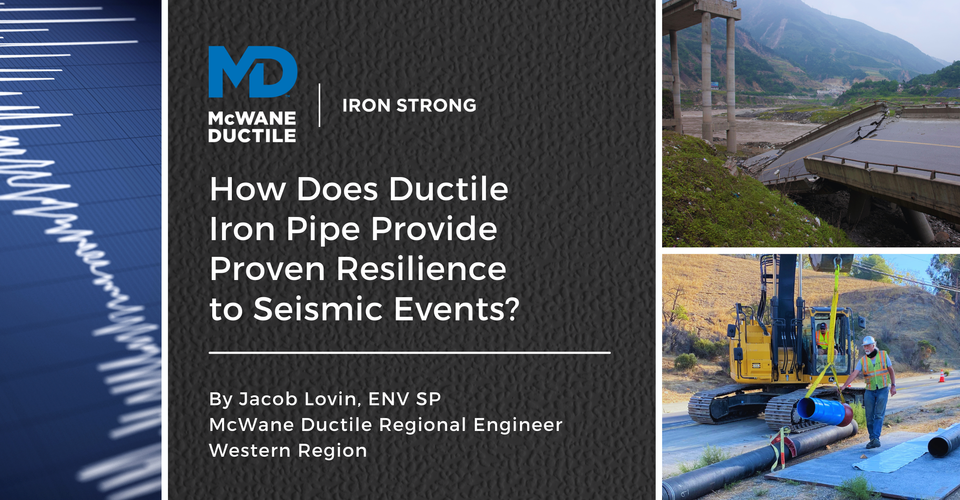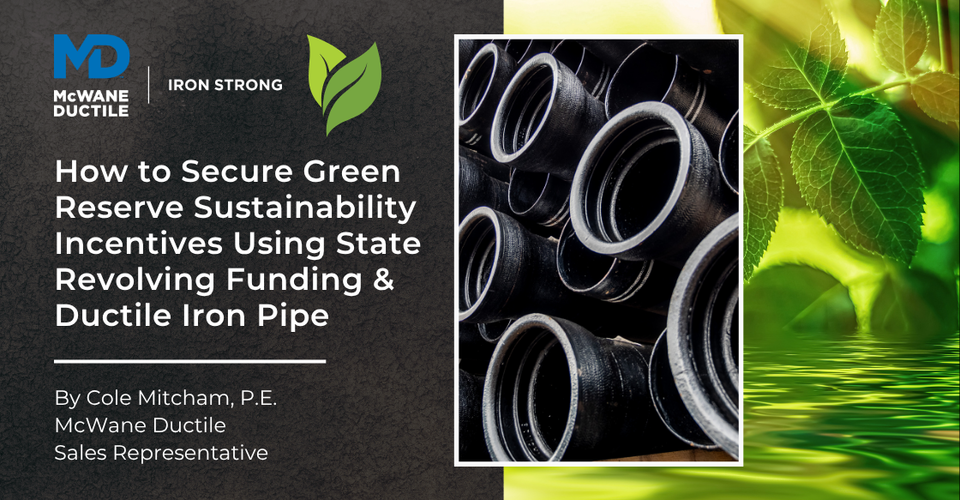It seems as though many times, we watch a TV commercial or pick up a product at the store, highlighting how strong, sustainable, or resilient that product proclaims to be. These attributes tend to be so overutilized that many people fail to recognize the true meaning when these terms apply to a specific product. However, many individuals have come to know and appreciate the value and worth of the term resiliency when selecting drinking water and even wastewater pipeline materials.
This attribute of resilience regarding certain water and wastewater infrastructure materials has allowed communities to recover more rapidly or even continue providing essential services in case of natural disasters. In this #IronStrong Blog, we will discuss why selecting water and wastewater underground infrastructure materials is critical in this regard.
JUST WHAT IS RESILIENCY?
A simple definition of resiliency is “the ability to adapt and recover from difficult situations, challenges, and adversity.” However, when this term is applied to water and wastewater infrastructure, the National Infrastructure Advisory Council extends that definition to “the ability to reduce the magnitude and/or duration of disruptive events. The effectiveness of a resilient infrastructure depends upon its ability to anticipate, absorb, adapt to, and/or rapidly recover from potentially disruptive events” (NIAC, 2009). This more comprehensive definition outlines key components that should be recognized during the material selection process for drinking water and wastewater systems.
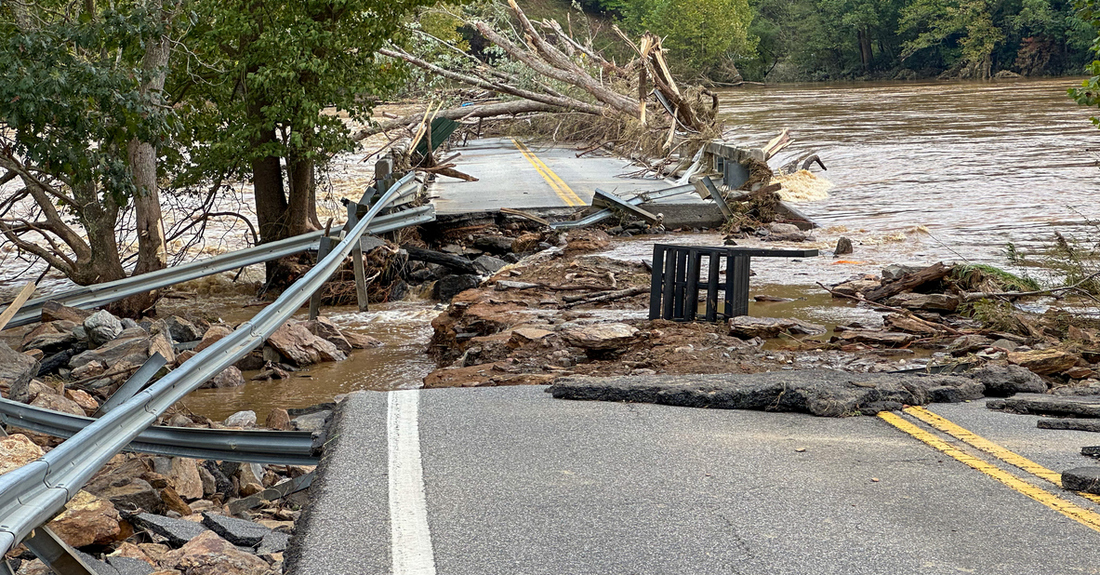
SO, JUST WHAT ARE THESE DISRUPTIVE EVENTS?
In this particular article, we will evaluate infrastructure resilience caused by natural disasters, primarily flooding, which results from many weather conditions, including hurricanes, river flooding, coastal flooding, and flash flooding. A subsequent article will address disruptive events related to wildfires and seismic activity. Maintaining a viable water infrastructure or accelerating its recovery is crucial during flooding events, both for fire protection and for meeting the sanitation and drinking water needs of affected communities.
RIVER FLOODING
River flooding occurs when water levels rise over the top of riverbanks due to excessive rain from tropical systems making landfall, persistent thunderstorms over the same area for extended periods, combined rainfall and snowmelt, or an ice jam. There are many examples of river floods across the country throughout the years, one of the most notable being the Mississippi River flood of 1927, which flooded 27,000 square miles over several states — this massive volume of water strips soil layers and saturates, causing enormous stress on underground facilities.
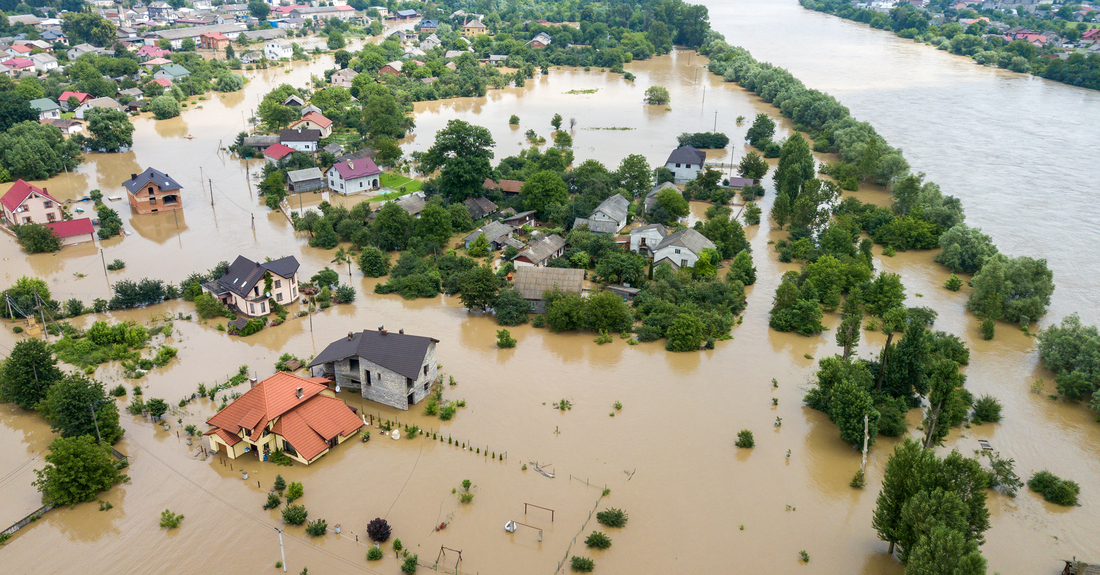
COASTAL FLOODING
Coastal flooding is the inundation of land areas along the coast caused by higher-than-average high tides and worsened by heavy rainfall and onshore winds (i.e., wind blowing landward from the ocean). This unintended volume of water creates similar effects regarding soil erosion and saturation, having a direct effect on underground facilities. Hurricanes along coastal areas directly relate to creating this condition.
STORM SURGE
Similarly, a storm surge is an abnormal rise in water level in coastal areas, over and above the regular astronomical tide, caused by forces generated by a severe storm's wind, waves, and low atmospheric pressure. Storm surges are extremely dangerous because they can flood large coastal areas. Extreme flooding can occur in coastal areas, particularly when a storm surge coincides with normal high tide, resulting in storm tides reaching up to 20 feet or more.
Along the coast, storm surges are often the greatest threat to life and property from a hurricane. In the past, large death tolls have resulted from the rise of the ocean associated with many of the major hurricanes that have made landfall. Hurricane Katrina (2005) is a prime example of the damage and devastation that surges can cause. At least 1,500 persons lost their lives during Katrina, and many of those deaths occurred directly or indirectly as a result of the storm surge. Most recently, last year, Hurricane Milton created storm surges in Florida, where 32 people lost their lives, causing an estimated $85 billion in damages.
FLASH FLOODS
Flash floods are caused by heavy or excessive rainfall in a short period of time, generally less than six hours. Flash floods are usually characterized by raging torrents after heavy rains that rip through riverbeds, urban streets or mountain canyons. They can occur within minutes or a few hours of excessive rainfall. They can also occur even if no rain has fallen, for instance, after a levee of a dam has failed or after a sudden release of water by a debris or ice jam.
In 2024, experts stated that the remnants of Hurricane Helene were not the only factor that contributed to the severity of the flooding that struck the mountain community of Asheville, North Carolina. Several conditions in the region, including a precursor rain event and the land's topography, gave rise to deadly flash flooding. I would venture to say many individuals reading this article can attest through personal experience, or through that of a family member or acquaintance, to the devastation of the aftermath of a significant flood of any nature — I know I can see the results of flash flooding in my home state of West Virginia, and more recently the devastation in Eastern Kentucky, the state where I presently reside. One precious resource that residents look forward to utilizing is water, whether for drinking, sanitary needs, fire protection or simply cleaning up the mess. So, what infrastructure material will provide either continuous in some cases or a rapid recovery under such circumstances?
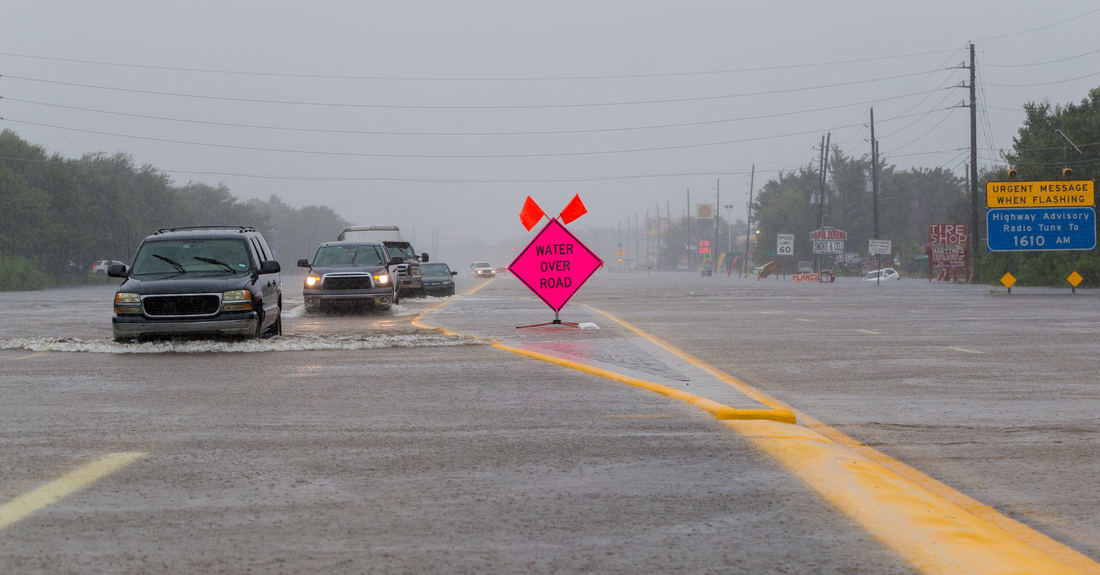
LET’S COMPARE THIS COMPONENT OF RESILIENCY
Typically, underground infrastructure is shielded from many destructive elements of aboveground natural disasters, such as flying debris from a hurricane. However, it becomes evident that aboveground facilities fare much better with, let’s say, Ductile iron pipe (DI pipe) than other alternate materials. However, when torrents of water with high velocities not only supersaturate the soil but virtually “dig their own trenches,” undermining underground pipelines that may be left hanging in the air, certain materials will rise to the definition of resilient more so than others. The inherent strength and stiffness of Ductile iron pipe can withstand these forces, whether they be shear or beam, many times continuing to transmit water under pressure, or at the very least being able to be reassembled quickly due to the pipe barrels being intact.
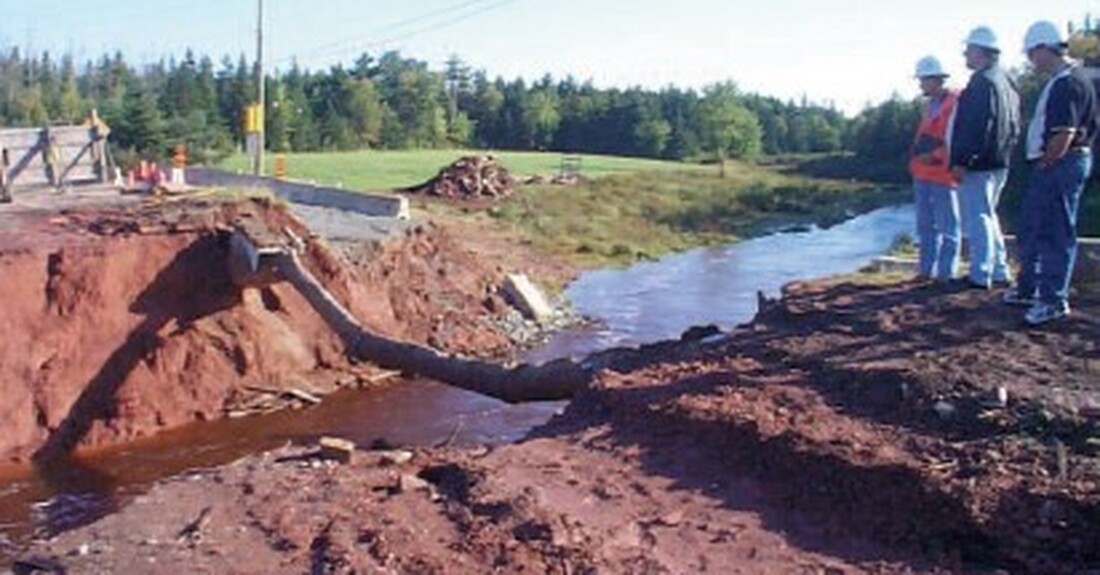
Conversely, alternate materials such as PVC will fail under these conditions, many times with entire pipeline sections washing away due to buoyancy or failure due to shear forces. Additionally, in some cases where areas are prone to flooding, restrained joint DI pipe could even be considered to ensure infrastructure continuity. During these devastating events, soil contamination often occurs when substances containing volatile organic compounds are released from petroleum-related storage facilities. Ductile iron pipe is impervious to the permeation of such substances, whereas PVC pipe is not.
Ductile iron pipe has proven to be the most conservative design for pressure pipe applications, providing those components to address the definition of the effectiveness of a resilient infrastructure. I encourage you to read one of our #IronStrong blogs, In the Eye of the Storm – When Pipeline Material Choice & Investment Matter Most, authored by my colleagues Jerry Regula and Gary Gula. In it, they recall their story of being on-site immediately following Hurricane Ian in 2022, which devasted the Fort Myers, Florida area, and witnessing firsthand the resiliency of Ductile iron pipe in the aftermath of the storm.
Need Assistance with Your Waterworks Project?
If you have any questions regarding your water or wastewater infrastructure project, your local McWane Ductile representative is equipped with the expertise to assist you. Many of our team members have managed small and large water utility systems, served in engineering consulting firms, and bring decades of experience solving field issues involving pipeline construction and operation. From design to submittal to installation, we strive to educate and assist water professionals throughout the water and wastewater industry.

